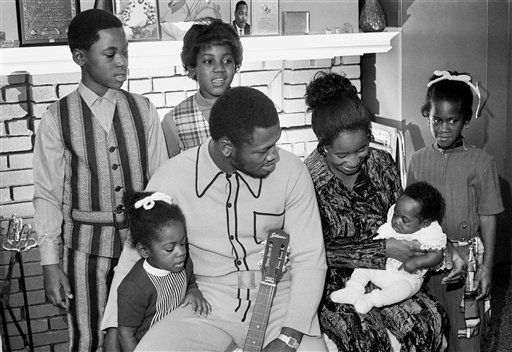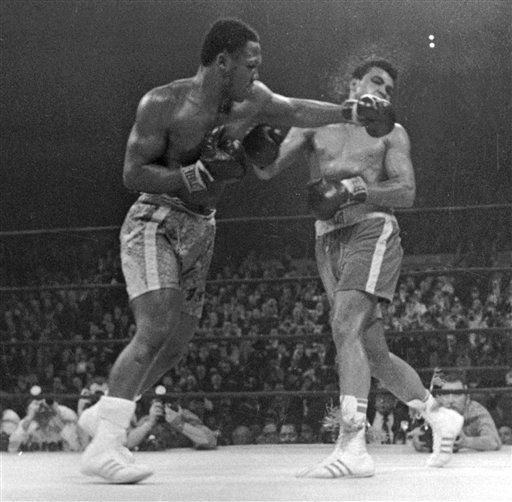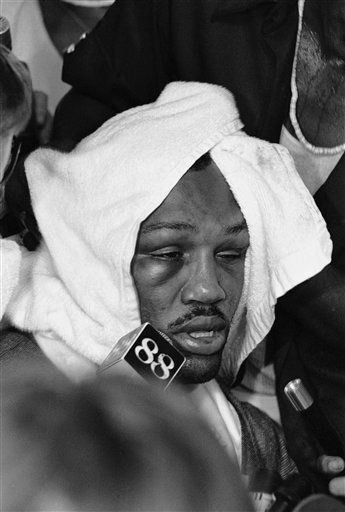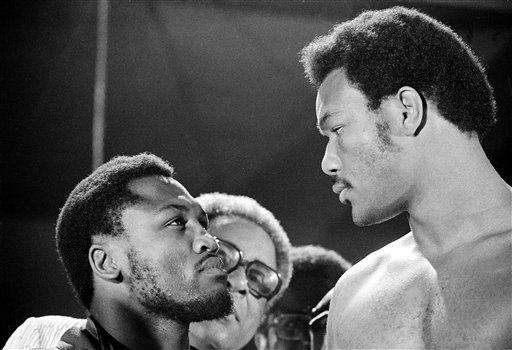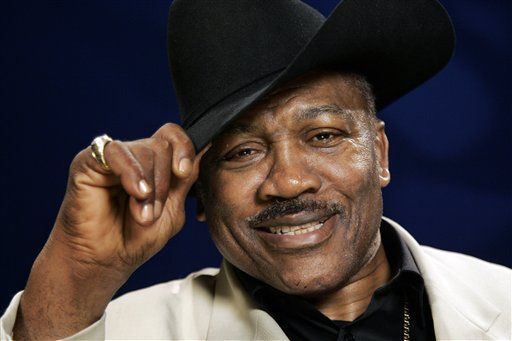Tuesday, November 29, 2011
5 Ways to Never Run Out of Blog Post Ideas
5 Ways to Never Run Out of Blog Post Ideas: 5 Ways to Never Run Out of Blog Post Ideas
Monday, November 28, 2011
The Dissenter | The New Republic
What happened when the education world's most prominent intellectual switched sides.The Dissenter | The New Republic
Now, pundits, scholars, philanthropists, and education leaders are all asking the same question: What happened to Diane Ravitch?
The gray-haired woman walked to the microphone as the crowd chanted, “Diane! Diane!” “This is a historic day. I’m a historian,” she told them. She spoke for only eight minutes, in short, punchy sentences. “Carrots and sticks are for donkeys.” “Education is a right, not a race.” “Our problem is poverty, not our schools.” When she finished, the crowd began chanting again: “Thank you! Thank you!”
It was, historically speaking, a strange place for Diane Ravitch to be. There was no indication that, until recently, she had championed many of the policies that were denounced at the rally as tools of racism and oppression. That she had spent years in the inner circle of conservative education policy, advocating for school vouchers, firing incompetent teachers, and shutting down failing schools. Ravitch once assured the public, “Vouchers and charters will not destroy public education. This is an incredible and fantastical fear.” Now she says things like, “Vouchers are a con, intended to destroy public education.”
In 2000, Ravitch, seemingly anticipating just such a consensus, argued: “If we found that there is no difference in performance between charter schools, voucher schools, and regular public schools, it would not be a victory for the status quo. Instead, we would have to say that the choice of school belongs to the parent.” Now that the overall research consensus matches this scenario, Ravitch focuses repeatedly on the Stanford study, asserting that it proves charters have failed.
Her genius was in the construction of a public identity of partial affiliation—a university-based historian who never wrote an academic dissertation, a former government official whose career in public service lasted less than two years, an overseer of the national testing program with no particular expertise in testing, and a champion of public school teachers who has never taught in a public school. She enjoys the credibility of the sober analyst while employing all the tools of the polemicist.
Now, pundits, scholars, philanthropists, and education leaders are all asking the same question: What happened to Diane Ravitch?
The gray-haired woman walked to the microphone as the crowd chanted, “Diane! Diane!” “This is a historic day. I’m a historian,” she told them. She spoke for only eight minutes, in short, punchy sentences. “Carrots and sticks are for donkeys.” “Education is a right, not a race.” “Our problem is poverty, not our schools.” When she finished, the crowd began chanting again: “Thank you! Thank you!”
It was, historically speaking, a strange place for Diane Ravitch to be. There was no indication that, until recently, she had championed many of the policies that were denounced at the rally as tools of racism and oppression. That she had spent years in the inner circle of conservative education policy, advocating for school vouchers, firing incompetent teachers, and shutting down failing schools. Ravitch once assured the public, “Vouchers and charters will not destroy public education. This is an incredible and fantastical fear.” Now she says things like, “Vouchers are a con, intended to destroy public education.”
In 2000, Ravitch, seemingly anticipating just such a consensus, argued: “If we found that there is no difference in performance between charter schools, voucher schools, and regular public schools, it would not be a victory for the status quo. Instead, we would have to say that the choice of school belongs to the parent.” Now that the overall research consensus matches this scenario, Ravitch focuses repeatedly on the Stanford study, asserting that it proves charters have failed.
Her genius was in the construction of a public identity of partial affiliation—a university-based historian who never wrote an academic dissertation, a former government official whose career in public service lasted less than two years, an overseer of the national testing program with no particular expertise in testing, and a champion of public school teachers who has never taught in a public school. She enjoys the credibility of the sober analyst while employing all the tools of the polemicist.
Eduwonk
Eduwonk
About Eduwonk
About Bellwether Education Partners
About Andrew Rotherham
'School of Thought' column at
Andrew J. Rotherham is a co-founder and partner at Bellwether Education, a non-profit organization working to improve educational outcomes for low-income students. Rotherham leads Bellwether’s thought leadership, idea generation, and policy analysis work. He also writes the weekly “School of Thought” column for TIME.com as well as the blog Eduwonk.com and is the co-publisher of “Education Insider” a federal policy research tool produced by Whiteboard Advisors. Rotherham previously served at The White House as Special Assistant to the President for Domestic Policy during the Clinton administration and is a former member of the Virginia Board of Education. In addition to Bellwether, Rotherham has founded or co-founded two other influential education reform organizations including Education Sector and served on the boards of several other successful education start-ups.
About Eduwonk
About Bellwether Education Partners
About Andrew Rotherham
'School of Thought' column at

Andrew J. Rotherham is a co-founder and partner at Bellwether Education, a non-profit organization working to improve educational outcomes for low-income students. Rotherham leads Bellwether’s thought leadership, idea generation, and policy analysis work. He also writes the weekly “School of Thought” column for TIME.com as well as the blog Eduwonk.com and is the co-publisher of “Education Insider” a federal policy research tool produced by Whiteboard Advisors. Rotherham previously served at The White House as Special Assistant to the President for Domestic Policy during the Clinton administration and is a former member of the Virginia Board of Education. In addition to Bellwether, Rotherham has founded or co-founded two other influential education reform organizations including Education Sector and served on the boards of several other successful education start-ups.
NCTAF Home National Commission on Teaching and America's Future.
National Commission on Teaching and America's Future. NCTAF Home
About NCTAF
Teaching for America’s Future:
A Challenge to the Nation
Setting the Agenda on Teaching Quality
For more than a decade, NCTAF has been a leading voice on what matters most for student learning: quality teaching in schools organized for success. To close the student achievement gap, we must close the teaching quality gap in high-priority schools and disciplines. NCTAF calls on policymakers and education leaders to provide every child in America with 21st century teaching.
About NCTAF
Teaching for America’s Future:
A Challenge to the Nation
Setting the Agenda on Teaching Quality
For more than a decade, NCTAF has been a leading voice on what matters most for student learning: quality teaching in schools organized for success. To close the student achievement gap, we must close the teaching quality gap in high-priority schools and disciplines. NCTAF calls on policymakers and education leaders to provide every child in America with 21st century teaching.
Home | Teach.gov
Home | Teach.gov
In the coming months, Microsoft will be moving the site from http://www.teach.gov to http://www.teach.org and will work to form a coalition of other private-sector companies that care about education, the company said.
ED’s new partner in teacher recruitment: Microsoft Software giant wins competition to take over the federal TEACH campaign and website
“In many ways, [this project] encapsulates the power of partnerships, the promise of technology, and the benefits of international collaboration to strengthen the teaching profession,” said Education Secretary Arne Duncan at a keynote speech during Microsoft’s Partners in Learning Global Forum.In the coming months, Microsoft will be moving the site from http://www.teach.gov to http://www.teach.org and will work to form a coalition of other private-sector companies that care about education, the company said.
Survey reveals teens’ experiences on social networking sites
Survey reveals teens’ experiences on social networking sites
Many students have witnessed cyber bullying and seek advice from their friends, parents
As social media use has become pervasive in the lives of American teens, a new study finds that 69 percent of the teenagers who use social networking sites say their peers are mostly kind to one another on such sites. Still, 88 percent say they have witnessed people being mean or cruel to another person on the sites, and 15 percent say they have been the target of mean or cruel behavior themselves.
The findings are detailed in a new report called “Teens, Kindness and Cruelty on Social Network Sites: How American teens navigate the new world of ‘digital citizenship,’” from the Pew Research Center’s Internet & American Life Project.
Stop Coddling the Super-Rich
By WARREN E. BUFFETT
Yet for Mr. Lauder, an heir to the Estée Lauder fortune whose net worth is estimated at more than $3.1 billion, the evening went beyond social and cultural significance. As is often the case with his activities, just beneath the surface was a shrewd use of the United States tax code. By donating his art to his private foundation, Mr. Lauder has qualified for deductions worth tens of millions of dollars in federal income taxes over the years, savings that help defray the hundreds of millions he has spent creating one of New York City’s cultural gems.
The debate over whether to reduce tax shelters and preferences for the rich is one of the most volatile in Washington and will move to the presidential campaign, now that repeated attempts in Congress to strike a grand bargain over spending cuts and an overhaul of the tax code have failed.
The cable television network he built in Central Europe, CME Enterprises, maintains an official headquarters in the tax haven of Bermuda, where it does not operate any stations.
Dear Wall Street, this is why the people are angry
The Lauders: A Family’s Billions, Artfully Sheltered
Ronald S. Lauder: heir to the Estée Lauder fortune whose net worth is estimated at more than $3.1 billion. Forbes magazine says makes him the world’s 362nd wealthiest person
To celebrate the 10th anniversary of the Neue Galerie, Mr. Lauder’s museum of Austrian and German art, he exhibited many of the treasures of a personal collection valued at more than $1 billion, including works by Van Gogh, Cézanne and Matisse, and a Klimt portrait he bought five years ago for $135 million.Yet for Mr. Lauder, an heir to the Estée Lauder fortune whose net worth is estimated at more than $3.1 billion, the evening went beyond social and cultural significance. As is often the case with his activities, just beneath the surface was a shrewd use of the United States tax code. By donating his art to his private foundation, Mr. Lauder has qualified for deductions worth tens of millions of dollars in federal income taxes over the years, savings that help defray the hundreds of millions he has spent creating one of New York City’s cultural gems.
The debate over whether to reduce tax shelters and preferences for the rich is one of the most volatile in Washington and will move to the presidential campaign, now that repeated attempts in Congress to strike a grand bargain over spending cuts and an overhaul of the tax code have failed.
The cable television network he built in Central Europe, CME Enterprises, maintains an official headquarters in the tax haven of Bermuda, where it does not operate any stations.
In China, concerns grow over environmental costs of Apple products
Green activists in China target alleged Apple suppliers
Neither Kaedar nor Apple would talk about the factory. Behind the scenes, though, Apple met with environmentalists like Ma Jun, one of the authors of the pollution report and one of China's best-known activists. Apple's supply chain managers told Ma the company audited nearly a dozen of its suppliers. They showed him a power point presentation of their findings: improper wastewater treatment, bad hazardous storage practices, things like that. But...
An alleyway in Tongxin village is lined with refuse. Around 150 people live in Tongxin village.
- Rob Schmitz/Marketplace
- Rob Schmitz/Marketplace
Sunday, November 27, 2011
Dr. John D. Bransford
Dr. John D. Bransford
In 1984 Bransford was asked by the Dean of Peabody College at Vanderbilt to help begin a Learning Technology Center that would focus on education. The Center grew from 7 people in 1984 to approximately 100 by 1999. During that time, Bransford and his colleagues developed and tested a number of innovative computer, videodisc, CD-Rom, and Internet programs for mathematics, science, and literacy. Examples include the Jasper Woodbury Problem Solving Series in Mathematics, the Scientists in Action Series, and the Little Planet Literacy Series. Many of these programs are being used in schools throughout the world. Bransford's dissertation won honorable mention in the national "Creative Talent Awards" contest; several of his published articles (co-authored with colleagues) have won "article of the year" in the areas of science education, technology, design, and theories of transfer. The Little Planet Literacy Series, has won major awards including the 1996 Technology and Learning Award and the 1997 Cody award for Best Elementary Curriculum from the Software Publishers Association. Bransford received the Sutherland Prize for Research at Vanderbilt, was elected to the National Academy of Education, and was awarded the Thorndike award in 2001.
In 1984 Bransford was asked by the Dean of Peabody College at Vanderbilt to help begin a Learning Technology Center that would focus on education. The Center grew from 7 people in 1984 to approximately 100 by 1999. During that time, Bransford and his colleagues developed and tested a number of innovative computer, videodisc, CD-Rom, and Internet programs for mathematics, science, and literacy. Examples include the Jasper Woodbury Problem Solving Series in Mathematics, the Scientists in Action Series, and the Little Planet Literacy Series. Many of these programs are being used in schools throughout the world. Bransford's dissertation won honorable mention in the national "Creative Talent Awards" contest; several of his published articles (co-authored with colleagues) have won "article of the year" in the areas of science education, technology, design, and theories of transfer. The Little Planet Literacy Series, has won major awards including the 1996 Technology and Learning Award and the 1997 Cody award for Best Elementary Curriculum from the Software Publishers Association. Bransford received the Sutherland Prize for Research at Vanderbilt, was elected to the National Academy of Education, and was awarded the Thorndike award in 2001.
Learning: Engage and Empower
Goal: All learners will have engaging and empowering learning experiences both in and out of school that prepare them to be active, creative, knowledgeable, and ethical participants in our globally networked society.
Figure 1. A Model of Learning, Powered by Technology
What Learning Should Look Like
Figure 1 depicts a model of learning powered by technology. In contrast to traditional classroom instruction, which often consists of a single educator transmitting the same information to all learners in the same way, the model puts students at the center and empowers them to take control of their own learning by providing flexibility on several dimensions. A core set of standards-based concepts and competencies form the basis of what all students should learn, but beyond that students and educators have options for engaging in learning: large groups, small groups, and activities tailored to individual goals, needs, and interests.Harvard EdCast: Are You a Global Citizen?
Harvard EdCast: Are You a Global Citizen?
The Harvard EdCast is a weekly series of podcasts, available on the Harvard University iTunes U page, features a 15-20 minute conversation with thought leaders in the field of education from across the country and around the world. Hosted by Matt Weber, the Harvard EdCast will serve as a space for educational discourse and openness, focusing on the myriad issues and current events related to the field.
The Harvard EdCast is a weekly series of podcasts, available on the Harvard University iTunes U page, features a 15-20 minute conversation with thought leaders in the field of education from across the country and around the world. Hosted by Matt Weber, the Harvard EdCast will serve as a space for educational discourse and openness, focusing on the myriad issues and current events related to the field.
Discourse Tools | Tool Systems to Support Progress toward Expert-Like Teaching by Early Career Science Educators 2008-2013 Discovery K-12 Grant
Discourse Tools | Diigo
Teaching by Early Career Science Educators 2008-2013 Discovery K-12 Grant
Tools for ambitious science teaching
Core Practices for Ambitious Science TeachingTool Systems to Support Progress toward Expert-LikeTeaching by Early Career Science Educators 2008-2013 Discovery K-12 Grant
Generation M2: Media in the Lives of 8- to 18-Year-Olds - Kaiser Family Foundation
Generation M2: Media in the Lives of 8- to 18-Year-Olds - Kaiser Family Foundation
A national survey by the Kaiser Family Foundation found that with technology allowing nearly 24-hour media access as children and teens go about their daily lives, the amount of time young people spend with entertainment media has risen dramatically, especially among minority youth. Today, 8-18 year-olds devote an average of 7 hours and 38 minutes (7:38) to using entertainment media across a typical day (more than 53 hours a week). And because they spend so much of that time 'media multitasking' (using more than one medium at a time), they actually manage to pack a total of 10 hours and 45 minutes (10:45) worth of media content into those 7½ hours.
The report is based on a survey conducted between October 2008 and May 2009 among a nationally representative sample of 2,002 3rd-12th grade students ages 8-18, including a self-selected subsample of 702 respondents who completed seven-day media use diaries, which were used to calculate multitasking proportions.
The challenge for our education system is to leverage technology to create relevant learning experiences that mirror students' daily lives and the reality of their futures. We live in a highly mobile, globally connected society in which young Americans will have more jobs and more careers in their lifetimes than their parents. Learning can no longer be confined to the years we spend in school or the hours we spend in the classroom: It must be lifelong, lifewide, and available on demand (Bransford et al. 2006).
A national survey by the Kaiser Family Foundation found that with technology allowing nearly 24-hour media access as children and teens go about their daily lives, the amount of time young people spend with entertainment media has risen dramatically, especially among minority youth. Today, 8-18 year-olds devote an average of 7 hours and 38 minutes (7:38) to using entertainment media across a typical day (more than 53 hours a week). And because they spend so much of that time 'media multitasking' (using more than one medium at a time), they actually manage to pack a total of 10 hours and 45 minutes (10:45) worth of media content into those 7½ hours.
The report is based on a survey conducted between October 2008 and May 2009 among a nationally representative sample of 2,002 3rd-12th grade students ages 8-18, including a self-selected subsample of 702 respondents who completed seven-day media use diaries, which were used to calculate multitasking proportions.
The challenge for our education system is to leverage technology to create relevant learning experiences that mirror students' daily lives and the reality of their futures. We live in a highly mobile, globally connected society in which young Americans will have more jobs and more careers in their lifetimes than their parents. Learning can no longer be confined to the years we spend in school or the hours we spend in the classroom: It must be lifelong, lifewide, and available on demand (Bransford et al. 2006).
Saturday, November 26, 2011
Friday, November 18, 2011
Unnatural Turkeys: A New Marketplace Podcast
 Podcast
PodcastSpecifically, the question is this: of all the commercially raised turkeys in the U.S., what percentage are the product of artificial insemination?
The answer, oddly enough, is 100 percent. Why? Well, it’s a supply-and-demand story. Because Americans particularly love to eat turkey breast meat (a great delivery platform for gravy!), turkeys have been selectively bred over the years to have bigger and bigger breasts. So big, in fact, that when it comes time for a male turkey to naturally reproduce with a female, his massive breast prevents him from getting close enough to complete the act.
Your Thanksgiving turkey is probably a product of artificial insemination
The modern turkey has quite large turkey breasts, and it actually physically gets in the way when the male and the female try to create offspring.
Labels:
artificial insemination,
Thanksgiving,
turkey
Visible Learning: John Hattie and Student-Directed Projects
Visible Learning: John Hattie and Student-Directed Projects
The cover of John Hattie's Visible Learning boasts the blurb "Reveals teaching's Holy Grail." Everybody in education needs to get it. If Hattie's subtitle, A Synthesis of Over 800 Meta-Analyses Relating to Achievement, gives you pause, I can assure you it isn't as scary as it sounds.
Auckland University Professor John Hattie has recently authored a study, based on research into 83 million students, studying effective teachers around the world and has come up with some reassuring results for creative teachers. It's all about trusting relationships and 'oodles of feedback'. Note - it is not about national testing, our government's highly unoriginal plan. Read Kelvin's full article
The cover of John Hattie's Visible Learning boasts the blurb "Reveals teaching's Holy Grail." Everybody in education needs to get it. If Hattie's subtitle, A Synthesis of Over 800 Meta-Analyses Relating to Achievement, gives you pause, I can assure you it isn't as scary as it sounds.
Auckland University Professor John Hattie has recently authored a study, based on research into 83 million students, studying effective teachers around the world and has come up with some reassuring results for creative teachers. It's all about trusting relationships and 'oodles of feedback'. Note - it is not about national testing, our government's highly unoriginal plan. Read Kelvin's full article
Monday, November 14, 2011
The Center for Critical Thinking
Critical thinking is essential if we are to get to the root of our problems and develop reasonable solutions. After all, the quality of everything we do is determined by the quality of our thinking.
The Question of Critical Thinking
"Tools of the Mind"
To successfully function in school and beyond, children need to learn more than a set of facts and skills. They need to master a set of mental tools—tools of the mind.
The concept of "Tools of the Mind" comes from the work of Russian psychologist Lev Vygotsky, He believed that just as physical tools extend our physical abilities, mental tools extend our mental abilities to enable us to solve problems and create solutions in the modern world
According to Vygotsky, until children learn to use mental tools, their learning is largely controlled by the environment: they attend only to the things that are the brightest or loudest and they can remember something only if has been repeated many times. AFTER children master mental tools, they can become in charge of their own learning by attending and remembering in an intentional and purposeful way. Similar to how using mental tools transforms children’s cognitive behaviors, they can also transform their physical, social and emotional behaviors. From being "slaves to the environment," children become "masters of their own behavior." As children are taught and practice an increasing number of various mental tools, they transform not only their external behaviors, but also their minds, leading to the emergence of higher mental functions.
Vygotsky, L. (1978). Mind in society: The Development of Higher Mental Processes. Cambridge, MA, Harvard University Press.
Labels:
Lev Vygotsky,
mental tools,
psychologist,
Russian,
Tools of the Mind
Friday, November 11, 2011
Roscoe Brown: A Tuskegee Airman Speaks
Roscoe Brown: A Tuskegee Airman Speaks
And there were black pilots to look up to, he recalls, including Bessie Coleman, who learned to fly in France and became a great stunt pilot. Before that, there was Julian Boyd, who flew for the Canadian air force in World War I. There was also Albert E. Forsythe, who flew across the country in 1933.
But during World War II, the NAACP, the Pullman Car Porters Union and other civil rights groups forced the U.S. military to create an experimental group called the 99th Fighter Squadron, which was trained at an airfield in Tuskegee, Ala., Brown said. Eventually the military built a $1 million airfield to train blacks under segregated circumstances. An estimated 1,000 pilots were trained, and about 12,000 workers received technical training, Brown said.
Double Victory:
Double Victory: Two Warriors in the Fight for Civil Rights During WWII is 13 years in the making. Many people along the way were of great assistance, from the nameless secretary who gave the first lead, to people who donated their time and resources.
Films
And there were black pilots to look up to, he recalls, including Bessie Coleman, who learned to fly in France and became a great stunt pilot. Before that, there was Julian Boyd, who flew for the Canadian air force in World War I. There was also Albert E. Forsythe, who flew across the country in 1933.
But during World War II, the NAACP, the Pullman Car Porters Union and other civil rights groups forced the U.S. military to create an experimental group called the 99th Fighter Squadron, which was trained at an airfield in Tuskegee, Ala., Brown said. Eventually the military built a $1 million airfield to train blacks under segregated circumstances. An estimated 1,000 pilots were trained, and about 12,000 workers received technical training, Brown said.
Double Victory:
Double Victory: Two Warriors in the Fight for Civil Rights During WWII is 13 years in the making. Many people along the way were of great assistance, from the nameless secretary who gave the first lead, to people who donated their time and resources.
Films
Thursday, November 10, 2011
Wednesday, November 9, 2011
D+C Development and Cooperation
D+C Development and Cooperation
D+C Development and Cooperation is a monthly publication. The journal is funded by Germany’s Federal Ministry for Economic Cooperation and Development and commissioned by Deutsche Gesellschaft für Internationale Entwicklung (GIZ) GmbH. However, the journal does not serve as a governmental mouthpiece. Our mission is to provide a credible forum of debate, involving governments, civil society, the private sector and academia at an international level. D+C is the identical twin of E+Z Entwicklung und Zusammenarbeit, the leading German language publication on development issues. D+C and E+Z share the same content.
D+C Development and Cooperation is a monthly publication. The journal is funded by Germany’s Federal Ministry for Economic Cooperation and Development and commissioned by Deutsche Gesellschaft für Internationale Entwicklung (GIZ) GmbH. However, the journal does not serve as a governmental mouthpiece. Our mission is to provide a credible forum of debate, involving governments, civil society, the private sector and academia at an international level. D+C is the identical twin of E+Z Entwicklung und Zusammenarbeit, the leading German language publication on development issues. D+C and E+Z share the same content.
Labels:
D+C Development and Cooperation
Smokin' Joe Frazier Dead at 67
In this file photo taken Nov. 22, 1970, heavyweight champion Joe Frazier and his family pose for a family portrait after he returns from a successful defense of his boxing title in Philadelphia.
(AP Photo, File)
(AP Photo, File)
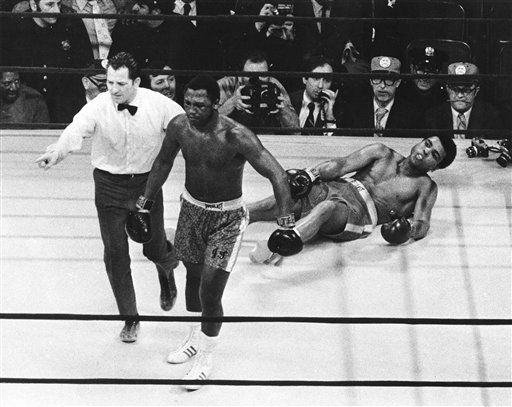 In this March 8, 1971, file photo, Joe Frazier is directed to a corner by referee Arthur Marcante after Frazier knocked down Muhammad Ali during the 15th round of the title bout in Madison Square Garden in New York.
In this March 8, 1971, file photo, Joe Frazier is directed to a corner by referee Arthur Marcante after Frazier knocked down Muhammad Ali during the 15th round of the title bout in Madison Square Garden in New York. (AP Photo/File)
In this March 8, 1971, file photo, Muhammad Ali. right, takes a left from Joe Frazier during the 15th round of their heavyweight title boxing bout in New York.
(AP Photo/File)
(AP Photo/File)
In this Oct. 1, 1975 file photo, a swollen right eye is apparent on Joe Frazier’s face as he is almost covered over by a towel in Manila, Philippines after losing by TKO in the 14th round to heavyweight champion Muhammad Ali at the Coliseum.
(AP Photo/MC/KM, File)
(AP Photo/MC/KM, File)
In this file photo taken Jan. 22, 1972, defending WBA champion Joe Frazier, left, and challenger George Foreman have a close look at each other as they meet during the weigh-in moments before their world heavyweight boxing title bout.
(AP Photo/File)
(AP Photo/File)
In this April 2, 2009, file photo, Joe Frazier poses for a portrait in NewYork
Though he beat Ali in that fight, Frazier lost the final two and for many years was bitter about the role Ali forced him to play as his foil.
Frazier, who won gold for the US at the 1964 Olympic Games in Tokyo, had an epic rivalry with Muhammad Ali, and took him on in three momentous fights in the '70s. In the so-called Fight of the Century in 1971 he became the first man to beat Ali, but he lost the next two showdowns, including 1975's classic "Thrilla in Manila," which Ali described as "the closest I've come to death."
But Ali won the rematch two years later, and then proved his superiority in Manila, in what many still consider to have been the best — and most brutal — boxing match of all time. ‘That was the closest I’ve come to dying,’ Ali said afterwards.
The great charmer also emerged victorious in the PR war by summoning Frazier’s son, Marvis, to his dressing room after the fight and telling him he hadn’t meant a word of what he had said about his father.
But Ali never apologised directly to Frazier, and it took him a further quarter of a century to say in public he was sorry.
‘I said a lot of things in the heat of the moment that I shouldn’t have said and called him names I shouldn’t have called him,’ he told the New York Times in 2001. ‘It was all meant to promote the fight.’
Both were from the South, where racism was most virulent (Ali was raised in Kentucky, Frazier in South Carolina) and both were brilliant athletes who took up boxing because it offered an opportunity to break free of their social and financial shackles.
Daily Mail
Daily Mail
Frazier, not for the last time, was astonished by his behaviour, and quietly vowed to take vengeance in the only place where he could match Ali: the ring
Frazier was ‘dumb’, ‘ugly’, ‘stupid’, a supine patsy to the white boxing authorities, Ali crowed (conveniently forgetting that Frazier’s training and corner team were black while his were largely white).
His clear implication was that, when he viewed Smokin’ Joe — who never rocked the boat — he saw all that was worst in a black man, and he wanted to destroy that with words as well as fists.
As historian Randy Roberts says: ‘One of the many paradoxes about Ali is that he embraced an ideology that disparaged white people, yet he was never cruel to white people — only blacks.’ And Frazier, he adds, was treated most cruelly of all.
Labels:
Joe Frazier,
Muhammad Ali,
Olympic Games,
Thrilla in Manila
Tuesday, November 8, 2011
Friends of Bedford
Friends of Bedford
"Academic empowerment is the birthright of every child."
- Bedford Academy motto
A School Succeeds With Extra Study and Little Homework
Friends of Bedford is an educational consultancy that reaches the hearts and minds of inner-city students – helping them realize their potential and take charge of their future. We customize our approach for each community, creating innovative educational models which inspire students to learn, rigorous support programs to ensure students master the material, and a positive community spirit that enables success.
"Academic empowerment is the birthright of every child."
- Bedford Academy motto
A School Succeeds With Extra Study and Little Homework
Friends of Bedford is an educational consultancy that reaches the hearts and minds of inner-city students – helping them realize their potential and take charge of their future. We customize our approach for each community, creating innovative educational models which inspire students to learn, rigorous support programs to ensure students master the material, and a positive community spirit that enables success.
Labels:
Bedford Academy,
Friends of Bedford,
George Leonard,
NYC DOE
Monday, November 7, 2011
Get a Life: Students Collaborate in Simulated Roles
Get a Life: Students Collaborate in Simulated Roles
Second Life virtual-reality game: It's not time travel, but it's close
Read more: Second Life virtual-reality game: It's not time travel, but it's close - Pittsburgh Tribune-Review
Graduate students at Indiana University of Pennsylvania developed the virtual-reality video game "Civil Rights Movement Comes of Age in Second Life."
A preview of the project is available on YouTube at http://www.youtube.com/watch?v=XPW9wfLyhUM.
Second Life virtual-reality game: It's not time travel, but it's close
Read more: Second Life virtual-reality game: It's not time travel, but it's close - Pittsburgh Tribune-Review
Graduate students at Indiana University of Pennsylvania developed the virtual-reality video game "Civil Rights Movement Comes of Age in Second Life."
A preview of the project is available on YouTube at http://www.youtube.com/watch?v=XPW9wfLyhUM.
The Students' History: A digital History textbook created by students, for students!!!
The Students' History:
A digital History textbook created by students, for students!!!
A collaboration between Two Middle Schools.
Sunday, November 6, 2011
Kurzweil Predictions on Wikipedia – The Future Anyone Can Edit | Singularity Hub
 Image via WikipediaKurzweil Predictions on Wikipedia – The Future Anyone Can Edit | Singularity Hub\\
Image via WikipediaKurzweil Predictions on Wikipedia – The Future Anyone Can Edit | Singularity Hub\\Predictions made by Ray Kurzweil:From Wikipedia
Technological Singularity
''What Ray does consistently,'' says Neil Gershenfeld from MIT university, ''is take a whole bunch of steps everyone agrees on, and take principles for extrapolating that everyone agrees on … so they lead to things that nobody agrees on … things that seem crazy''.
Read more: http://www.theage.com.au/national/androids-and-angels-20111105-1n13r.html#ixzz1cz4Jneby
10 Questions for Ray Kurzweil
Androids and angels
Related articles
- Singularity Summit 2011 Part II - Artificial Intelligence and the Brain (singularityhub.com)
- Is The Open Source/Internet Singularity Coming? (hashtagify.me)
Tuesday, November 1, 2011
Subscribe to:
Posts (Atom)



